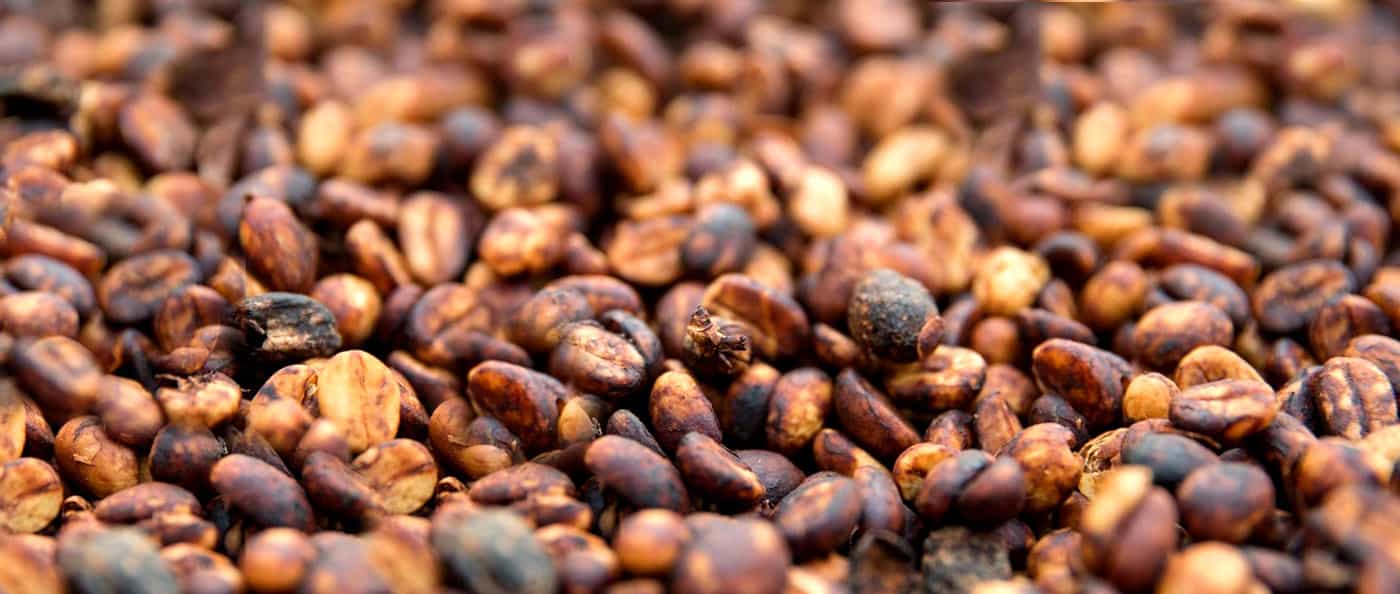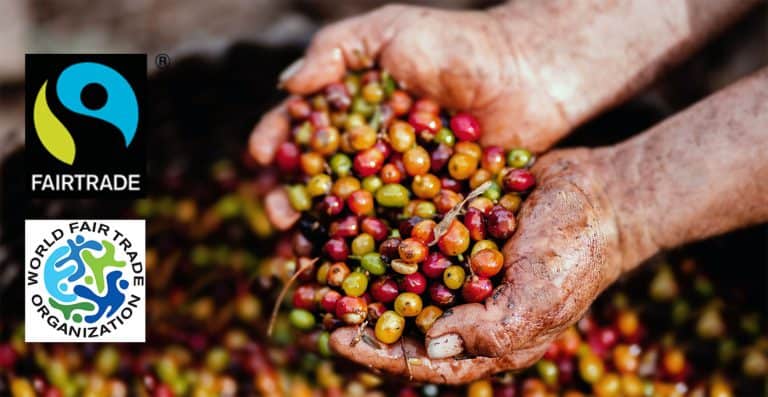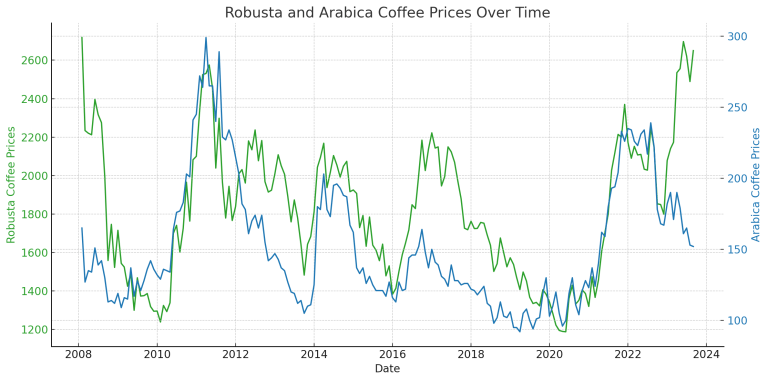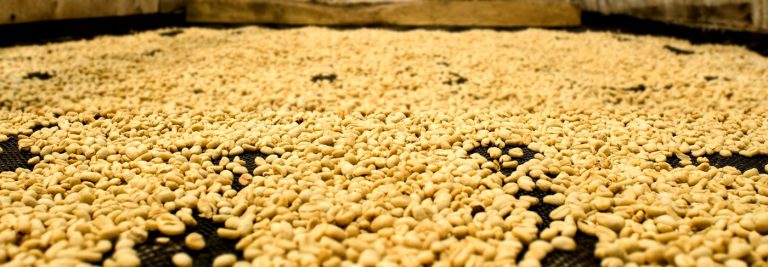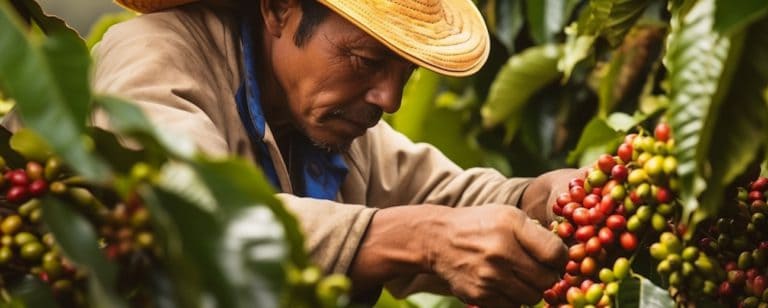What is Honey Processing Method? Pulped Natural Coffee Process Explained
Whenever I go to a new café that roasts its own beans, I always take my time at the coffee shelves. Recently, I overheard a pair of shoppers choosing their beans and making the remark that honey-processed coffee is probably sweeter because maybe, honey was used to make it.
Well, not exactly, but I can see why this may be a common misconception. No honey is used during the honey process 🙂
I proceeded to explain to them, as I will now in this article, the details of honey processing, so you can better understand what goes into this meticulous method of producing sweeter than average coffee (that doesn’t really use honey in the process).
What is Honey Coffee Processing?
One of the most common and popular ways to process coffee is the honey processing method, also known as the semi-washed or pulped natural process, which involves removing the coffee cherry’s skin and some (but never all) mucilage before drying it under the sun.
But where does the honey come in? Don’t get confused because it has nothing to do with honey from bees.
Its name comes from the fact that the mucilage on the coffee beans was dubbed “honey” because of its sticky consistency (who wants to say mucilage, anyways?). Fittingly, this method is also known for highlighting the sweetness in the coffee beans.
This method has gained popularity in recent years, particularly in Costa Rica where it originated, and in other Central American countries – and for good reason. Honey-processed coffee combines the best features of natural and washed processes, to produce uniquely flavored brews.
What does honey processed coffee taste like?
Coffees crafted through the honey process possess the crispness and brightness of washed coffee along with the complex flavor profiles typically found in natural coffees.
When you sip on a cup of honey-processed coffee, you can expect a balanced acidity with a heavier body and evident sweetness. The flavors are often exotic and fruity, sometimes showcasing tropical fruit notes with an intriguing fermented complexity in the finish.
Steps of the Honey Processing Method
Now that you have a better understanding of honey coffee processing and its unique flavors, let me guide you through the process step-by-step:
- Harvesting: Just like with any coffee processing method, it all starts with harvesting ripe coffee cherries, which are carefully hand-picked from the trees to ensure optimal quality.
- Depulping: After harvesting, the cherries go through a depulper machine where the outer skin is mechanically removed, separating the beans from the fruit.
- Sticky Mucilage Coating: In fully washed coffees, most of the mucilage is removed from the parchment or hull. But in honey processing, a thin layer of sticky mucilage remains to envelop the coffee beans. This gives honey-processed coffees their distinctive sweetness and flavors.
- Controlled Fermentation: The next step involves allowing the remaining mucilage-coated beans to ferment for a specific period – usually one to three days depending on desired flavor profiles. During fermentation, natural sugars present in the mucilage begin to caramelize, contributing to unique taste characteristics.
- Drying Process: After fermentation comes drying time. The beans are left to dry in the sun for 2-3 weeks, being raked and turned from time to time, until it reaches a moisture content of about 11%.
- Removal of parchment layer: The final step in honey processing is the removal of the parchment layer. This turns the beans into raw beans that are ready for coffee roasters to work on.
That’s how complex the honey-processed coffee beans have to go through before they get ready for grinding and brewing. For me, this just makes every cup worthy of appreciation.
Variations in Honey Coffee Processing: White, Yellow, Red, & Black
Unlike natural and washed coffees, the resulting beans from the honey method are classified into different varieties based on the amount of mucilage left before drying:
| Honey Type | Mucilage Removal % | Taste and Texture Description |
|---|---|---|
| White Honey | 80-100% | Not much difference in taste from washed coffee |
| Yellow Honey | 50-75% | Mild in fruitiness, similar to washed coffee |
| Red Honey | 25-50% | More fruit flavor and sweetness, with a noticeably syrupy body |
| Black Honey | Below 25% | More winey, with a creamy body |
Let’s take a closer look at some of these variations.
White and Yellow Honey Process
If you prefer a cup of coffee with the least hint of sweetness but still bursts with character, I recommend beans produced through the white or yellow honey method. With less mucilage remaining on the beans, your coffee gets a cleaner taste with a lighter body.
Red Honey Process
The red honey process bridges the range of flavors between white or yellow honey and black honey processes. This type involves allowing some mucilage to remain on the beans while they dry but not as much as in the black honey process. As a result, you’ll find that it has a syrupy effect on the flavor of your coffee, along with a creamier body.
Black Honey Process
Finally, there’s the black honey process. In this method, more mucilage is left on the bean during drying, resulting in a darker color and a stronger fruity flavor profile. The extended fermentation time gives the coffee an intense sweetness reminiscent of molasses or dark chocolate. I really like pulling sweet espresso shots with this one.
It’s also worth noting that coffee producers from other regions adopted a different way of achieving these variations. The more time left for the beans to ferment and caramelize, the darker the beans become and their fruity notes and sweetness also become more pronounced.
While the effect on flavors remains the same (the darker the bean, the sweeter the coffee), flavor profiles may vary between these different methods so you might want to check the brand’s way of determining their honey coffee’s color.
Comparing to Natural Process & Wet Process
The honey process sits on top of the most popular methods to process coffee, alongside the natural or dry process and the washed or wet process. But you might be wondering, how does the honey differ from the other?
Here’s an overview of the comparison between the three coffee processing methods followed by a more in-depth look:
| Process | Pros | Cons |
|---|---|---|
| Honey, aka Pulped Natural | – Have less risk of bean defects – More eco-friendly than washed coffee – Sweetness in coffee that’s great with espresso | – Often more expensive than the dry process |
| Natural, aka Dry | – Most eco-friendly option – Affordable – Fruity notes in the coffee with little acidity | – Prone to defects in the beans |
| Washed, aka Wet | – Considered superior in flavor – Brighter and cleaner cups that emphasize the beans’ flavors | – Generally more expensive than the other methods – Excessive usage of water makes it unsustainable |
Honey vs Natural Process
Natural (or dry) process is renowned for its distinctive fruity flavors due to the fact that coffee cherries are dried under the sun with their skin and flesh intact. This method, however, has more risk of spoilage or defects in the beans and can produce inconsistency between batches.
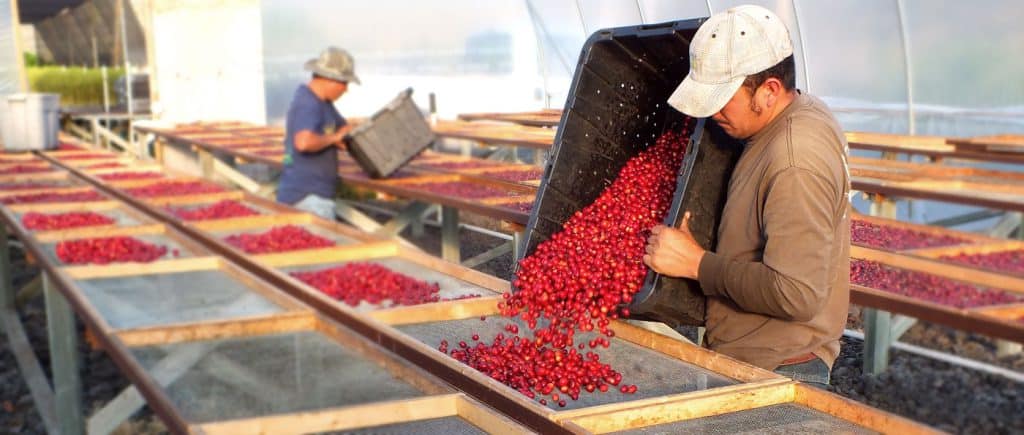
Since honey processed coffee cherries are de-pulped and fermented before they’re dried, you can expect the good qualities of natural coffee in your cup with more complexity and enhanced sweetness. Plus, it is less prone to defects and inconsistencies.
Honey vs Washed Process
In washed process, farmers remove all traces of pulp and skin from the coffee cherries, then the beans are soaked and fermented before being washed to remove any remaining impurities.
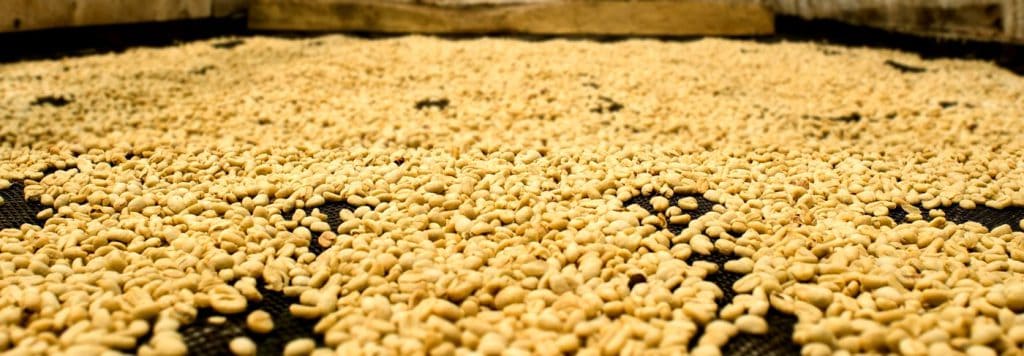
This results in cleaner and brighter cups that really emphasize what the coffee bean itself has to offer— uninfluenced by the sugars and compounds in the mucilage which are present in the honey process.
The drawback with washed coffee though is that it uses more water than the honey process, making it a concern for coffee sustainability with the excessive usage of water and the polluting wastewater. It’s worth pointing out though that steps are being taken to make this process more eco-friendly.
To better understand these popular coffee processing methods along with their more uncommon counterparts, you can read my recent article on the subject.
Conclusion
And that concludes my in-depth look into honey-processed beans. It strikes a balance between natural and washed coffee, keeping the mucilage to ferment before drying to achieve a complex and sweet flavor profile with less risk of defects and less use of water.
If you like your brews to have a hint of sweetness to go with a fruity taste, then I recommend this coffee for you. Still, there’s one surefire way to determine if this suits your palate – give it a try! And please, let me know how you like them in a comment below.

